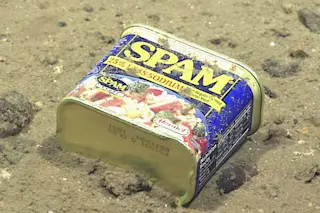A can of Spam found deep in the Mariana Trench. (Credit: NOAA Office of Ocean Exploration and Research) We already knew that noise pollution invades the Mariana Trench, but it seems that another, more dangerous, form of pollutant has entered the deepest place on Earth as well. Researchers from the University of Aberdeen went to arguably the most removed place on the planet and still found traces of chemical pollutants in creatures living miles below the ocean surface, as Naturereports. Speaking at a conference in Shanghai in early June, the scientists presented evidence of both PCB's and another class of toxic chemical called polybrominated diphenyl ethers (PBDE's) in small crustaceans gathered from the deeps.
The researchers conducted their study in 2014, when they used unmanned devices to trawl both the Mariana Trench and the Kermadec Trench, which is near to New Zealand. They found significant levels of both chemicals in ...














